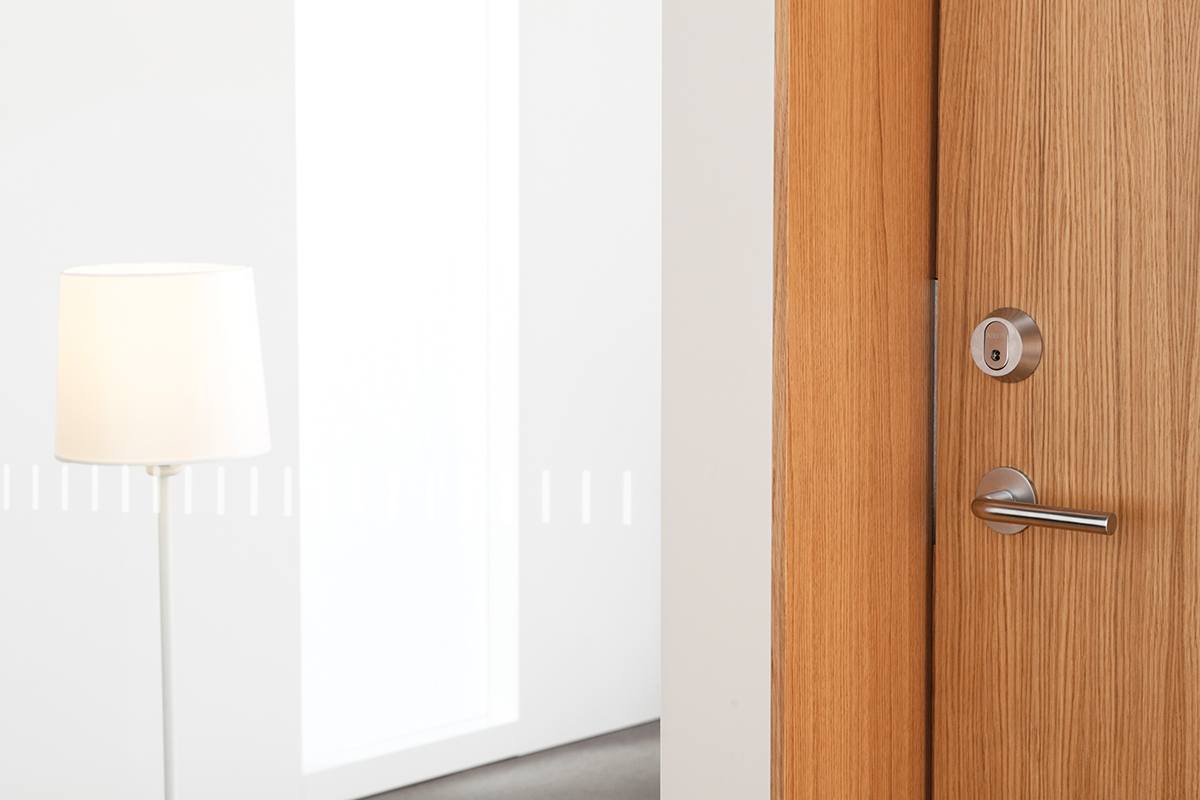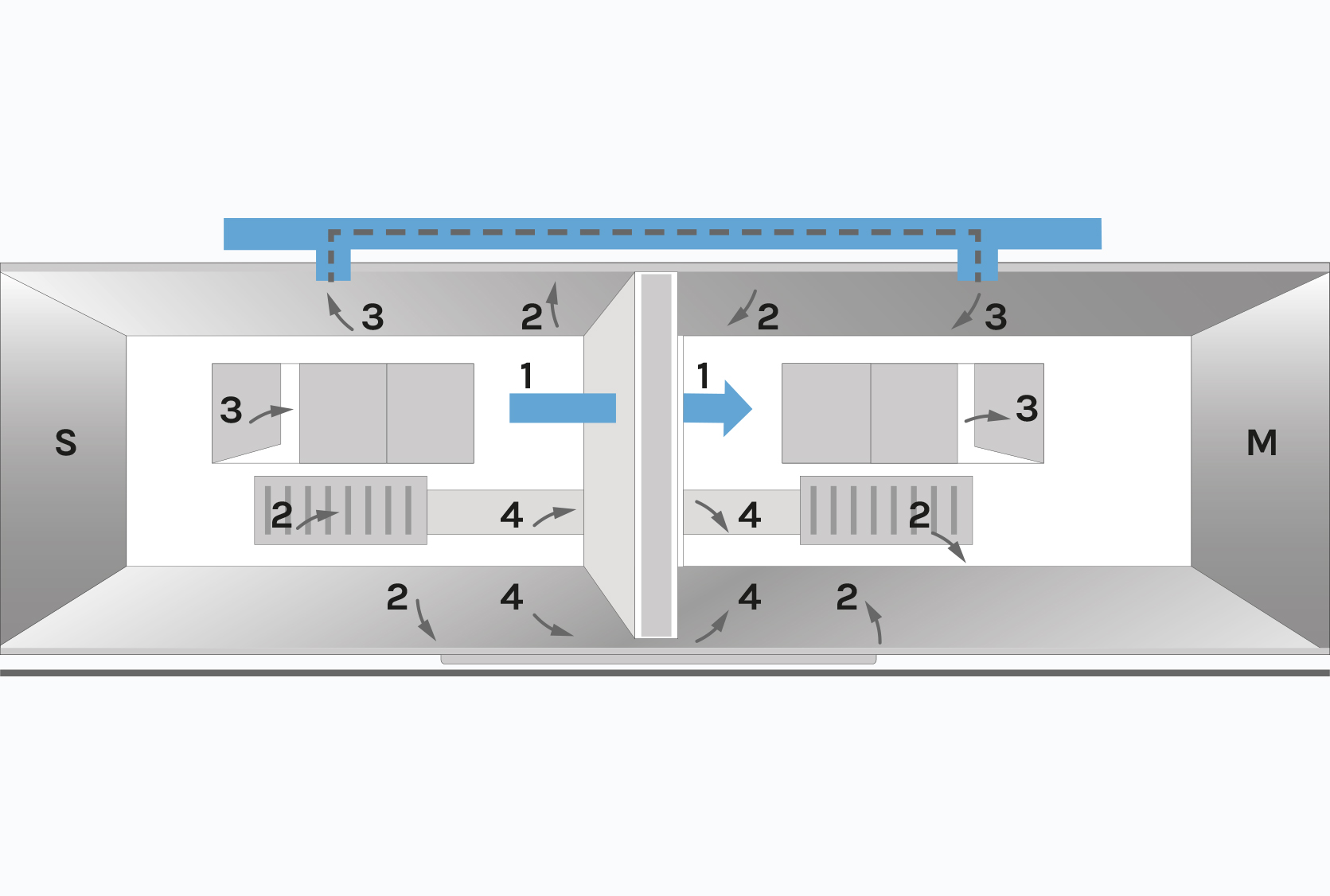Acoustics and sound reduction
Functional and practical space planning helps solve room acoustic problems: how you place the workstations and what kinds of acoustic elements you are using.

What is sound?
In short, the sound is a moving oscillation in the medium that results in hearing. It is a mechanical wave movement that does not proceed in a vacuum, but always needs a medium. The medium could be in any mode, such as gas, liquid or solid. The sound in the air and in the fluid is longitudinal wave motion. In solid matter, the sound can also proceed as a transverse wavelength.
Sound can be detected as sense of hearing, touching, or measurement.
The human hearing range reaches its best between the frequency range of 16 to 20,000 Hz. The sound that moves underneath this limit is called infrasound, and the sound that moves in higher frequencies is called ultrasound.
The human ear is most vulnerable in the frequency range of 20 Hz-20 kHz, for example, there are many warning and alarm tones within this range. Individual hearing range varies according to the general condition of a human’s ears and nervous system. Highlighting the optimal frequency range and eliminating disturbances improves clarity of speech. In room acoustics this is important and can be measured with the speech transmission index.
Room acoustics
When talking about soundproofing we mean the ability of structures to prevent the sound from moving from one space to another, or from blocking sound through the structure.

In room acoustics, there are often some problem areas, most common are:
- Direct sound transmission
- Flanking transmission
- Overhearing
- Leakage
Functional and practical space planning helps solve room acoustic problems: how you place the workstations and what kinds of acoustic elements you are using.
Sound reduction and absorbing sound
Attenuation of space surfaces means the ability of the room textures to absorb sound waves, and thereby attenuate the sound level.
Absorbable surfaces such as the ceiling, walls, floors, cushioned furniture, curtains, and even the people in the room absorbs sound waves. The most important dampening surfaces are the ceiling and the walls. Carpets mainly absorb the impact and sound of footsteps.
Reverberation
Reverberation, or echo, describes the impression that comes from the sound in the room. When there is a lot of reflected sound in the room, the room is echoed. The hard surfaces reflect the sound and cause echo, the sound absorbing materials reduce it and make the room feel more comfortable. The form of space also affects echo.
Reverberation time is a unit of measurement of echo and noise suppression efficiency. Reverberation time is the time during which the sound pressure level will drop to 60 dB.

When sound waves reach the boundaries of the room (ceiling, floor, walls), some of the sound energy is absorbed into the material, some pass through the material, and some are reflected and scattered around the space as shown above.
Decibels
Sound pressure is generated when sound waves cause air pressure changes in the air. The lowest audible sound pressure is called a hearing threshold, and the highest audible sound pressure is called a pain limit.
When using the sound pressure, a logarithmic scale is used, expressed in dB (dB). The lowest hearing level is 0 dB and the highest level is about 120 dB.
Sound Reduction Index Rw
The sound reduction index is expressed in decibels (dB) and can be calculated only for a single material or component, not for example for a whole room. This is a laboratory measurement that uses information about the relative size of the experimental rooms, the reverberation time in the reception room, the known noise level and the size of the test piece in order to obtain as accurate figure as possible.
As a rough example, the sound reduction index of the door could be measured by putting some music in the speaker to experimental room and then measuring the sound pressure level (dB) through the door. As this is correlated with information of the reverberation time, the sound pressure level of music, and other variables, a fairly accurate picture of the sound reduction index is obtained.
Sound Reduction Index R’W
Sound reduction index R’ is a field measurement that attempts to measure the sound reduction index of a material in the actual, finished structure or state of the material (e.g. walls between two rooms). It cannot take into account the results of alternative audio paths (e.g., audio leakage at seams), and therefore this life-style measurement usually yields a smaller result than the computational value of the lab.
Speech transmission index STI
Speech Transmission Index (STI) is a method for measuring the comprehension of speech. STI measures the status of the space (acoustic devices, acoustic panels, carpets, etc.) and tells the channel’s ability to transmit sound. It is universally applicable for measuring the impact of different acoustic environments, transmission channels and distractions.
When planning office’s or learning environment’s telephone booths and other quiet support facilities such as meeting rooms and conference rooms, getting familiar with the state of speech transmission is advised. This often tells more about the room acoustics than an individual sound damping values (dB) does.
When talking about modular meeting rooms and telephone booths, the speech transmission index value “bad” is the value to be sought. The low value indicates poor speech intelligibility outside the space, which means that people outside the space won’t be able to understand the spoken words, so the conversations stay confidential.

References:
https://www.ecophon.com/fi/akustiikkaratkaisut/akustiikan_tietopankki/
https://www.kotiakustiikka.fi/huoneakustiikka.html
https://fi.wikipedia.org/wiki/%C3%84%C3%A4ni
http://www.cs.tut.fi/sgn/arg/akusem/akuintro.pdf
http://www2.siba.fi/akustiikka/index.php?id=8&la=fi
Kylliäinen, M. and Hongisto, V. (2007). Rakennusten akustinen suunnittelu. Helsinki: Suomen rakennusinsinöörien liitto.
Kylliäinen, M. and Hongisto, V. (2011). Rakennusten akustinen suunnittelu: teollisuustilat. Helsinki: Suomen rakennusinsinöörien liitto.
